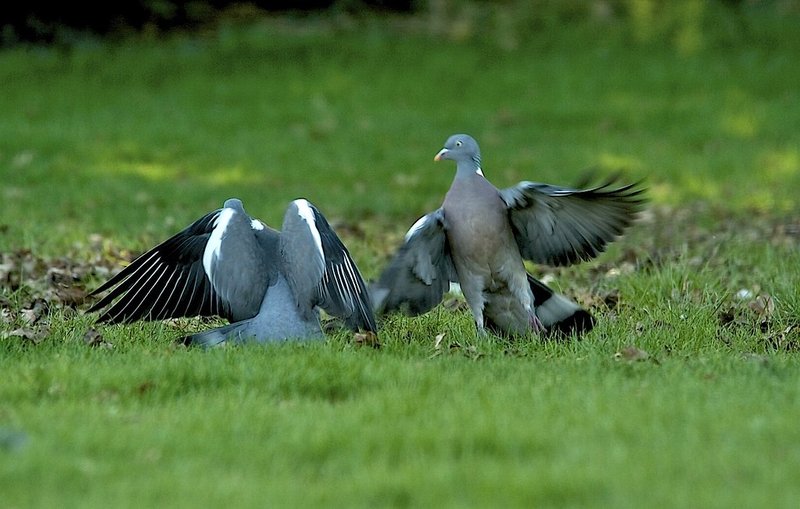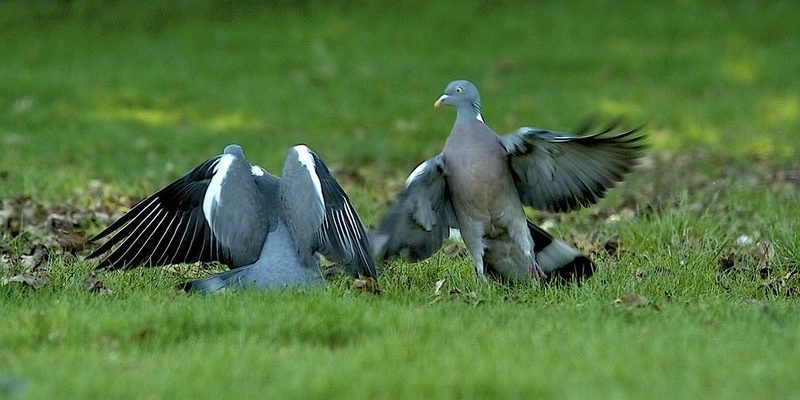
When it comes to courtship, the Passenger Pigeon had a flair for the dramatic. Imagine large flocks gathering, creating a vibrant spectacle that could captivate anyone lucky enough to witness it. Courtship wasn’t just about finding a mate; it was a lively show, filled with colorful displays and intricate behaviors that ensured their species thrived. Let’s dive into the fascinating world of their romantic entanglements and explore how they attracted partners in a manner that matched the grandeur of their existence.
The Role of Males in Courtship
In the world of Passenger Pigeons, male birds had a crucial role during the courtship phase. To attract females, they exhibited a series of impressive behaviors. One of the most iconic was their distinctive display flight. Males would soar high into the sky, puffing out their chests, their feathers shimmering in the sunlight. This wasn’t just for show; it was about broadcasting their vitality and strength to potential mates.
You might be wondering how a simple flight can make a difference. Well, it’s all about showcasing fitness. The more vigorous and graceful the flight, the more appealing the male became. After all, who doesn’t want a partner who can soar high and impress the crowd? Not only did this aerial display attract females, but it also helped males establish their territory, warding off rivals in the process.
In addition to their aerial antics, males also engaged in gentle vocalizations—soft coos that resonated through the forest. These calls were part of the mating ritual, designed to not only attract females but also to signal their presence to other males. The combination of their physical displays and vocal efforts created a dynamic courtship atmosphere, reminding us how essential communication is in the animal kingdom.
Female Selection Criteria
When it came down to finding a partner, female Passenger Pigeons had their own set of criteria. They were discerning in their choice, often preferring males that exhibited the most impressive displays. Essentially, the best performers won their attention. But what exactly were they looking for? Here’s the scoop.
Health and vitality were top on the list. Females sought males that demonstrated strength, agility, and overall well-being. A male who could pull off a complex flight pattern or deliver an engaging call was more likely to win a mate. After all, a strong male would likely produce healthy chicks. Alongside physical attributes, females also considered the male’s territory. A male claiming a prime location offered a sense of security, which was very appealing.
Interestingly, female Passenger Pigeons often observed the courtship behaviors of the males before making a decision. They would watch from a distance, assessing which suitor put on the best show. This show-and-tell aspect of courtship is not only fascinating but also highlights the importance of social learning in the animal world.
The Courtship Dance
Once a female showed interest, the male would initiate what can best be described as a courtship dance. Imagine a couple at a dance party, moving in sync and showcasing their best moves; that’s how it was for these pigeons! This courtship dance involved a series of choreographed movements, where male pigeons would puff up their feathers, spin around, and perform side-to-side hops to attract the females’ attention.
During this dance, the male would often initiate brief glimpses of mutual preening. It might seem minor, but this affectionate behavior deepened the bond between the pair. Not just an act of grooming, it symbolized trust and connection, setting the stage for a lasting partnership.
The courtship dance would typically continue until the female accepted the male’s advances. This process could involve several days, with males truly needing to put in the effort to win over their chosen partner. If a female was impressed, she’d eventually decide to mate, marking a significant moment in their reproductive journey.
Nesting and Reproduction
Once a pair was formed, the focus shifted to nesting. The Passenger Pigeon was known for its communal nesting practices. This meant that numerous pairs would establish nests in close proximity, creating a bustling neighborhood of shared parenting.
Nesting locations were typically selected in areas with abundant food sources and sufficient cover for protection. Female pigeons would weave together twigs, leaves, and other materials to create a cozy space for their eggs. As the female settled in to lay her eggs, both parents would share responsibilities, showcasing their commitment to raising their young.
After laying one or sometimes two eggs, the female would incubate them for about two weeks. During this time, the male would be busy foraging for food and defending their territory from intruders—another example of how both partners contributed to the success of their brood.
Once the eggs hatched, both parents participated in feeding and caring for the chicks. It wasn’t unusual to see a male proudly bringing food back to the nest, ensuring that his family was well taken care of.
Why Their Rituals Matter
So, why do the courtship and mating rituals of the Passenger Pigeon matter? Understanding these behaviors gives us insights into the complexity of animal relationships and the necessity of preserving such species. The Passenger Pigeon was once the most numerous bird in North America, but due to excessive hunting and habitat loss, it became extinct in the early 20th century. Their courtship behaviors, however, remind us of the rich tapestry of life that existed.
These rituals also play a crucial role in the ecosystem. By studying animal mating habits, we gain a better understanding of biodiversity and the role each species plays within its habitat. In a broader sense, these insights can drive conservation efforts, ensuring that future generations appreciate the intricate dances of courtship and mating in the wild.
Moreover, the story of the Passenger Pigeon serves as a poignant reminder of the fragility of life and the importance of responsible stewardship of our planet. It’s a call to action for every nature lover to protect the habitats and species that endure today.
In exploring the courtship and mating rituals of the Passenger Pigeon, we’ve uncovered a world of beauty, drama, and connection. From dazzling displays to intricate dances, these birds knew how to put on a show. Their rituals not only ensured the continuation of their species but also enriched the ecosystems that supported them.
As we reflect on their legacy, let’s take a moment to appreciate the delicate rhythms of nature and the importance of preserving the diverse life forms that grace our world today. Remember, every effort we make toward conservation is a step toward honoring the intricate stories of creatures like the Passenger Pigeon—stories that deserve to live on.

